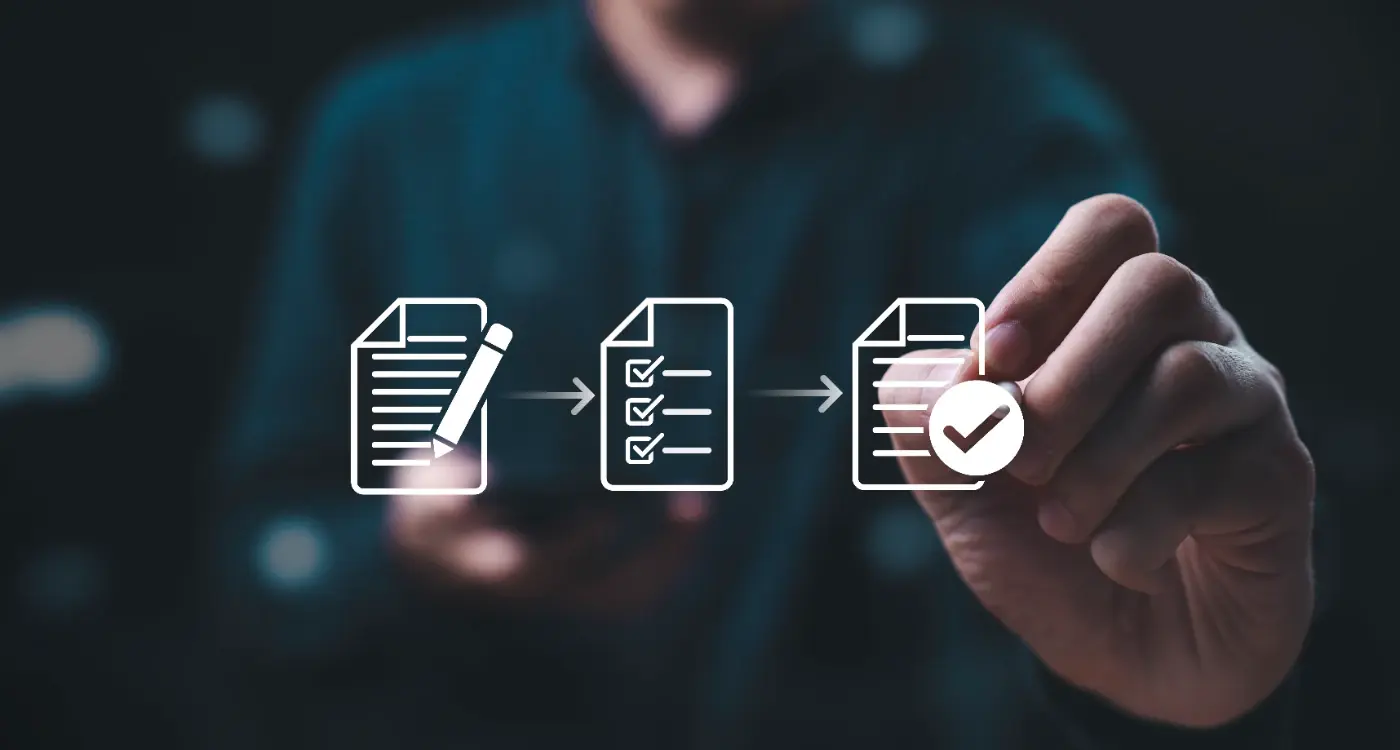Which Social Media APIs Should I Integrate Into My App?
Last month I was working with a client who'd built this brilliant fitness tracking app—really solid features, great design, users loved it. But there was one problem: people were using it religiously for weeks, then just... disappearing. When we dug into the user data, we found something interesting. People wanted to share their achievements, compare progress with friends, and feel part of a community. They were screenshotting their workouts and manually posting them to Instagram and Facebook, which was frankly a bit clunky.
This is where social media API integration becomes a game-changer for mobile apps. When you connect your app to platforms like Facebook, Instagram, Twitter, or TikTok, you're not just adding features—you're tapping into the social behaviours that keep people engaged. Users can share content seamlessly, invite friends, and bring their existing social connections into your app experience.
The best apps don't just solve problems; they become part of how people connect and share their lives
But here's the thing: not all social media APIs are created equal, and choosing the wrong ones can actually hurt your app's performance and user experience. Some APIs are perfect for content sharing, others excel at authentication, and some are brilliant for building community features. The key is understanding which APIs align with your app's goals and your users' needs. That's exactly what we're going to explore in this guide.
Understanding Social Media APIs
Right, let's start with the basics—what exactly is a social media API? Think of it as a bridge that connects your app to platforms like Facebook, Instagram, Twitter, or TikTok. API stands for Application Programming Interface, which sounds fancy but it's really just a set of rules that lets different software talk to each other.
When you integrate a social media API into your app, you're giving your users the ability to do things like share content, log in with their existing accounts, or pull in their social media photos. It's like having a direct line to these platforms without having to build everything from scratch.
How Social Media APIs Work
The process is quite straightforward. Your app makes a request to the social media platform's API, asking for specific information or permission to perform an action. The platform then responds with the data you need—or tells you if something went wrong.
Most social media APIs use something called REST, which is just a standard way of organising these requests. You'll typically need to register your app with the social media platform first, get some special keys (like a password), and then you can start making requests.
Types of Social Media API Integration
There are several ways you can use these APIs in your app:
- Social login—letting users sign in with their existing accounts
- Content sharing—posting photos, videos, or updates to social platforms
- Profile data access—getting basic user information like name and profile picture
- Feed integration—displaying social media content within your app
- Social analytics—tracking how your content performs across platforms
Popular Social Media APIs for Apps
When it comes to choosing which social media APIs to integrate into your app, you're spoilt for choice these days. The big players dominate the market for good reason—they offer solid documentation, reliable uptime, and massive user bases. Let's break down the most popular options that developers reach for time and time again.
The Heavy Hitters
Facebook's Graph API remains the gold standard for social features. It's mature, well-documented, and gives you access to a billion users. Instagram's Basic Display API (owned by Meta) is perfect for apps that need photo sharing capabilities. Twitter's API v2 has been completely rebuilt and offers excellent real-time features—though the pricing structure has changed recently. LinkedIn's API works brilliantly for professional networking apps, whilst YouTube's Data API is unbeatable for video content integration.
- Facebook Graph API - User profiles, posts, friends lists
- Instagram Basic Display API - Photo sharing and user media
- Twitter API v2 - Real-time tweets and user timelines
- LinkedIn API - Professional profiles and connections
- YouTube Data API - Video content and channel information
- TikTok for Developers - Short-form video integration
Making Your Choice
The APIs you choose should align with your target audience and app functionality. A fitness app might benefit from Instagram's visual content, whilst a professional networking app would naturally gravitate towards LinkedIn's API.
Start with one or two APIs rather than trying to integrate everything at once. You can always add more social features later as your app grows and you understand your users better.
Authentication and User Management
Getting people logged into your app through social media APIs is actually much simpler than building your own authentication system from scratch. When users tap that "Sign in with Facebook" or "Continue with Google" button, they're redirected to the social platform's secure login page—not something you've built. This means you don't have to worry about storing passwords or dealing with forgotten login details.
How Social Authentication Works
The process happens in three main steps. First, your app sends the user to the social platform's login page. Second, they enter their credentials there (not in your app). Third, the platform sends back a special token that proves the user is who they say they are. You can then use this token to access their basic profile information like name, email, and profile picture.
Managing User Data
Once someone's logged in, you'll receive different pieces of information depending on which platform they've used. Facebook might give you their email and profile photo, whilst Twitter might only provide their username and display name. LinkedIn could share their professional details if they've given permission. The key is to design your app so it works regardless of which social platform people choose—some users prefer Google, others stick with Apple's Sign In option.
Most social platforms also provide refresh tokens, which let you keep users logged in between app sessions without asking them to sign in repeatedly. This is particularly important for business apps that need to sync data across different systems.
Content Sharing and Publishing
When users love something in your app, they want to share it with their friends—and that's where content sharing APIs become your best friend. These social features let people post photos, videos, text updates, and links directly from your app to their favourite social platforms without having to switch between apps.
The big platforms like Facebook, Twitter, and Instagram all offer publishing APIs that make this possible. But here's the thing: each platform has its own rules and limitations. Instagram's API, for instance, is quite restrictive about what you can publish automatically; you might need to redirect users to complete their posts manually.
Choosing the Right Sharing Options
Think about what type of content your users will want to share. If it's mainly photos, Instagram and Facebook APIs should be priorities. For quick updates or news, Twitter's API works brilliantly. LinkedIn's publishing API is perfect if your app targets professionals.
When building something like a social media app, understanding the development costs and feature complexity can help you prioritise which sharing features to implement first.
The best sharing features feel invisible to users—they just work without getting in the way of the main experience
Don't forget about native sharing options either. Sometimes the built-in sharing sheets on iOS and Android are simpler to implement and give users more control over where their content goes. API integration gives you more customisation, but native sharing covers more platforms with less development time.
Social Login Implementation
Social login is one of those features that seems simple on the surface but can get quite complex when you dig into the details. I've implemented countless social login systems over the years, and I can tell you that getting it right makes a massive difference to your user experience.
The technical implementation varies depending on which platforms you choose to support. Most social media APIs use OAuth 2.0 for authentication, which means users get redirected to the social platform, grant permission, then return to your app with an access token. This token lets your app access their basic profile information without ever seeing their password.
Common Implementation Challenges
The biggest headache I see developers face is handling the different data formats each platform returns. Facebook might give you a user's email address, but Twitter doesn't always provide one. Instagram has different profile picture sizes compared to LinkedIn.
User expectations can also trip you up. People expect social login to be faster than creating a new account, so if your implementation is slow or buggy, they'll abandon the process entirely. This is especially important for startup apps where every user conversion matters.
Best Practices for Success
- Always have a fallback plan if social login fails
- Store minimal user data initially—you can always ask for more later
- Test thoroughly on different devices and network conditions
- Provide clear messaging about what data you're accessing
- Handle account linking gracefully when users have multiple login methods
The key is keeping the user journey smooth whilst building robust error handling behind the scenes.
Privacy and Data Protection
When you're integrating social media APIs into your app, you're not just adding cool features—you're taking on the responsibility of handling people's personal information. This isn't something to take lightly, and I've seen too many developers get caught out by privacy regulations they didn't even know existed.
The data you collect through social APIs can include names, email addresses, friend lists, posts, and sometimes even location information. Different countries have different rules about how you can use this data. The EU's GDPR is probably the most well-known, but there are similar laws popping up everywhere.
Always ask for the minimum permissions you actually need. Users get suspicious when a simple photo-sharing app wants access to their entire friend list and posting history.
What You Need to Do
Your privacy policy needs to be crystal clear about what data you're collecting and why. People should understand exactly what they're agreeing to when they connect their social accounts. You'll also need to give users control over their data—they should be able to disconnect their accounts and delete their information if they want to.
While balancing all these requirements, remember that user privacy concerns about social media and mobile phones are at an all-time high, so transparency is more important than ever.
- Only request the permissions your app genuinely needs
- Store social data securely and encrypt sensitive information
- Provide clear options for users to revoke access
- Keep your privacy policy updated when you add new social features
- Regularly audit what data you're collecting and delete anything you don't need
Most social platforms have their own privacy requirements too. Facebook, Twitter, and others all have specific rules about how you can use their APIs and what you must tell users about data collection.
Performance and User Experience
When you're integrating social media APIs into your app, performance isn't just about how fast things load—it's about how your users feel when they're using your app. I've seen too many apps that work perfectly but feel sluggish because the developers didn't think about the user experience side of API integration.
The biggest mistake I see is apps that freeze up when they're talking to Facebook or Instagram's servers. Your users don't care that there's a network delay; they just know your app feels broken. That's why you need to handle API calls in the background and show loading indicators that actually mean something. A spinning wheel is better than a frozen screen, but a progress bar with real feedback is even better.
Keep Your App Responsive
Social media APIs can be slow—Twitter might take three seconds to respond, Instagram could timeout completely. Your app needs to handle these situations gracefully. Cache data when you can, show placeholder content whilst things load, and always give users a way to retry when something goes wrong.
This is one of those areas where the difference between good and stellar apps becomes obvious—it's all in the details of how you handle these edge cases.
Smart Loading Strategies
Don't try to load everything at once. If you're showing a social feed, load the first few posts quickly and then fetch more as users scroll. This makes your app feel fast even when the APIs are being slow. Your users will thank you for it.
When implementing social features, consider how they'll integrate with other engagement tools. For instance, push notifications about social activity need to be handled carefully to avoid overwhelming users.
Conclusion
After working with countless clients over the years, I've seen firsthand how the right social media API integration can transform an app from mediocre to magnificent. The key isn't stuffing every possible social feature into your app—it's about choosing the ones that genuinely make sense for your users and your business goals.
Start with the basics: social login is almost always a good choice because it reduces friction for users signing up. Then think about what your users actually want to do. Are they creating content they'll want to share? Pick the platforms where your audience spends their time. Building a fitness app? Instagram might be perfect. Creating a professional networking tool? LinkedIn could be your best friend.
Before diving into integration, make sure you have a clear understanding of your app's core purpose and how social features support that mission. Don't forget that API integration isn't a "set it and forget it" task. Social platforms change their rules, update their features, and sometimes shut down entirely. Plan for maintenance and updates from day one. Your users will thank you for keeping things working smoothly.
When things go wrong on social media, having a solid plan for handling negative feedback will protect your app's reputation and help you improve your social features based on real user concerns.
The social features you choose today will shape how people interact with your app tomorrow. Choose wisely, implement carefully, and always put your users' privacy and experience first. That's the foundation of any successful app with social elements.
Share this
Subscribe To Our Learning Centre
You May Also Like
These Related Guides

Can My App Integrate With My Existing Business Systems?

Which Third-Party Integrations Require Legal Agreements?



